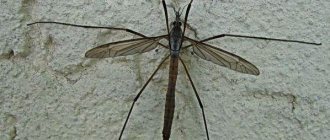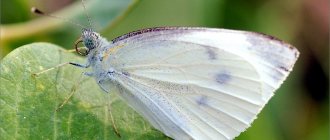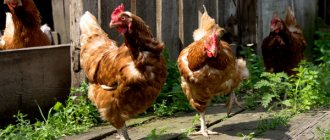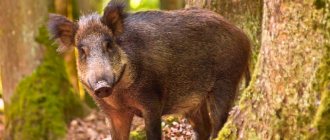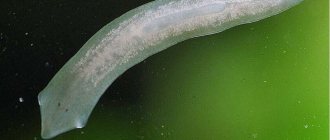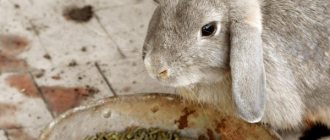The lifespan of butterflies depends on many factors, but the main ones can be distinguished: species, habitat. This information is especially important for those people who breed domestic insects. Such knowledge will allow you to correctly assess how comfortable a butterfly is in specific conditions.
If we give data on average indicators, we can say that butterflies in their natural environment can continue to exist for 2-3 weeks. This applies to most species. But average data cannot give a complete picture. The fact is that butterflies develop in special cycles, each of which has its own duration.
So, the development of an individual is divided into the following periods:
- The appearance of a clutch of eggs
- Formation of the caterpillar
- Pupation
- Transformation of a pupa into a butterfly
- Imago
If the average person believes that how long a butterfly lives is determined only by the moment of its carefree fluttering, experts take into account all the elements of an individual’s development. Thus, butterflies that develop in cold climates often live longer than their tropical counterparts. What's the matter here? In northern latitudes, prolonged cold and lack of food can delay the next phase of development, and the pupa will not degenerate into an adult. She simply doesn't have enough nutrients to transform. This existence of the insect can last up to two years.
How long do tropical butterflies live? Most often, as much as is measured for this particular species, since the tropics and subtropics are the main habitat of most representatives of lepidoptera. Ideal conditions have been created for them here. The only thing worth noting separately is that females live longer than males. This is due to natural reasons, namely the need to lay eggs in a timely manner to ensure procreation.
How long do butterflies live at home and in the wild?
How you want to prolong the beauty and admire longer the butterflies fluttering over the summer grasses or received as a gift in the middle of a frosty winter! But what is the lifespan of butterflies and is it possible to make them live for a very long time? It all depends on what is meant by life expectancy. And how many species of butterflies exist - each has its own period of stay on earth, which is influenced by a variety of factors, from species characteristics to location and living conditions. Data also differ on how long tropical butterflies live at home and in nature.
From a biological point of view, butterflies live quite a long time, because their development cycle consists of several stages: an egg, from which a larva and which we usually call a caterpillar, then a pupa is formed, and from the pupa the butterfly itself appears, an adult, which is more correctly called an imago. For many butterflies, including chocolate butterflies (or urticaria) familiar to residents of central Russia, this period can be up to 4 months. The Kallima butterfly (Kallima inachus) has two generations per year. Moreover, the first one, which develops in the wet season, is very bright, large - a real decoration of the forests of Africa and Asia! But the butterflies of the dry season are smaller, not so bright, and you may not even see them among the foliage.
Swallowtail butterflies, such as Monarch Danaeda, for example, or South American Heliconiidae, go through this cycle in 9 months. But the lifespan of the cabbage butterfly, also familiar to everyone from childhood, is only 20 days - so even during the short Russian summer, 4–6 generations of cabbage butterflies manage to appear! Among non-exotic butterflies, there are generally many long-lived ones: lemongrass (or buckthorn), mourning butterfly, peacock's eye, it takes a year to develop! The summer generation goes into hibernation; in the spring, the butterflies, barely waking up, lay eggs and die, and soon they are replaced by new ones, who fall asleep again with the onset of cold weather.
From a “consumer” point of view, the lifespan of butterflies is considered only as an opportunity to admire the imago - a flying beauty. Of course, there are enthusiasts who raise “full cycle” butterflies, but for this you need to have the right equipment, knowledge, and skills. So how many days do butterflies live in captivity? On average, their lifespan, with proper care and nutrition, ranges from a minimum of three days to ten to twenty days. And, of course, how long a butterfly lives is influenced by its species and biological characteristics. For example, if by life expectancy we mean how many days a chocolate butterfly lives in nature, then the answer is at least a year. But it is difficult to keep them at home - a week at most.
Habitats
Where do butterflies live? Butterflies live almost everywhere, with the exception of the northern Arctic latitudes. Of course, they are not there in the cold either.
Antarctica. In general, butterflies love warmth, so they are especially abundant in warm tropical latitudes.
Description of butterflies, burdock, cabbage grass, urticaria
Painted lady
Thistle, or Thistle, is a diurnal butterfly from the nymphalidae family.
Butterfly burdock. Photo: Tbc
Description. The color above is light brick red with black spots forming a transverse band in the middle of the forewing, and white spots at the end of the forewings; the underside of the hind wings has dark and light streaks and 4-5 ocular spots (yellow with a blue core) in front of the edge.
Spreading. It is more widespread than any other butterfly, as it is found in all parts of the world, with the exception of South America; in northern Europe it reaches Iceland. The caterpillar lives on thistles and artichokes. Fertilized females overwinter. Habitats and lifestyle. Butterflies are found everywhere where thistles and nettles grow; in the mountains they reach a height of 2000 m, but they still give preference to dry, sunny areas of the area - steppes, fields and meadows, avoiding dark forests.
The burdock is a famous traveler, flying to Europe from North Africa in the spring, and in the fall burdocks gather in flocks and fly south: to Iran, India, and some to Africa.
Hives
The urticaria, also known as the chocolate butterfly, is a diurnal butterfly from the nymphalid family.
In early spring, the wrens are already flying. They overwinter as adult butterflies. And as soon as the sun warms up, they crawl out of various cracks and from under the bark. They fly a little, lay eggs and die. Caterpillars usually live on nettles.
Butterfly hives. Photo: Jörg Hempel
Description. The Nettle butterfly is a commonly encountered daytime butterfly.
Its color is brick red with black spots and a black border. This black border is decorated with bright blue spots. The length of its wing is 4-5 centimeters. The urticaria caterpillar is usually 5 centimeters long, the color is bright green, the underside of the caterpillar's abdomen is yellow and covered with black stripes. Its black hairy caterpillar feeds on nettle leaves, which grow in abundance in gardens, near houses, and in weedy places; it is because of the caterpillar’s addiction to this grass that the butterfly got its name “nettle.”
The urticaria lays eggs on the underside of the leaf; the color of the eggs is yellow. The body length of the urticaria is usually up to 5-10 millimeters. The pupa belongs to the covered species. The mobility of the pupa is determined by the movements of its abdomen. The interesting thing is that it is almost impossible to distinguish the relatives of urticaria from each other.
Hives caterpillars. Photo: Joan Carles Hinojosa
Spreading. Today it can be found everywhere in Europe. The wren family includes more than five hundred species of butterflies and about 20 genera. The hives butterfly is a frequent visitor to almost all countries of the world.
Cabbage butterfly
Cabbage butterfly, cabbage white butterfly, is a diurnal butterfly from the white butterfly family. The binomial name comes from the Latin. Brassica is cabbage, one of the caterpillars' food plants.
Gardeners do not like this butterfly. Pest: its green caterpillars eat cabbage leaves and other garden plants. They cause particular harm if a lot of cabbageweeds arrive from the south, when the summer is dry there.
Cabbage butterfly. Photo: S Sepp
Description. The length of the fore wing of the imago is 25-33 mm. The wingspan of the male is 49-62 mm, of the female - 51-63 mm.
The wings are white with several black spots. On the forewing from above: the outer corner almost to the middle of the edge and a spot on the inner edge, and in females there are two more middle spots, black; two similar spots on the underside.
Hind wing with a black spot at the middle of the anterior margin; yellow below, with black pollen. Area. Widely distributed throughout Eastern Europe. North Africa, temperate Asia east to Japan.
In 1993, the species entered Southern Primorye. North of the Arctic Circle, mainly migrant individuals are found. Introduced to Chile and Panama. Habitat. Active migrant. Forest edges, clearings, meadows, roadsides, gardens, parks, forest belts along railways, often found directly in populated areas where there are cultivated cruciferous plants.
Summer time. April, May, June, July, August, September, 1st decade of October.
Cabbage caterpillars. Photo: lilly M
The adult feeds on the flowers of dandelion, calico, alfalfa, etc.
Reproduction. The female lays up to 200 eggs in heaps on the underside of the leaves of food plants. Fertility up to 300 eggs.
The egg stage is 5-12 days. Caterpillar. The caterpillar is up to 3.5 cm long, 16-legged, greenish-yellow, dotted with sparse and short black hairs and black dots; along the back and on the sides, above the legs, 3 yellow stripes stand out; the head and the last segment of the body are gray on top with black dots. The first instar caterpillar is light green, densely covered with black warts. Young caterpillars are motionless for some time and stick together.
Then, spreading out, they begin to feed on the pulp of the underside of the leaves. The secretions of the caterpillar's body glands cause skin irritation in humans. There have been cases of poisoning and death of birds eating caterpillars.
Young caterpillars prefer to feed on the underside of leaves, while older ones prefer to feed on the top.
Third instar caterpillars crawl away and live separately from others. They eat holes in the leaves of young cabbage heads, leaving only thick veins. They can migrate long distances in search of food.
Forage plants: horseradish, cabbage, field cabbage, garden cabbage, turnip, turnip, shepherd's purse, radish.
Doll. The pupa is yellowish-green, with black spots and dots and a tubercle on the back. For pupation, the caterpillar is attached with a belt of silk thread to substrates - on tree trunks, on fences, stones, stumps, etc. The diapausing pupa overwinters.
Butterflies are one of the most beautiful and amazing insects on earth. There are more than 250,000 varieties.
The beauty of these fluttering creatures has inspired more than one artist, sculptor, poet... Many are fascinated by collecting these amazing creatures.
We invite you to look at photographs of the most unusual and magnificent butterflies on our planet.
Classification and types
There are incredibly many different types of butterflies; zoologists have counted as many as 158 thousand different butterflies. For all this diversity, there are several complex and confusing classification systems. In our opinion, the most successful is the system that divides butterflies into 4 suborders.
Primary toothed moths
This includes small butterflies whose wingspan ranges from 4 to 15 mm. Butterflies of this suborder have a gnawing mouth and long antennae reaching 75% of the size of their front wings. The suborder consists of 160 species of butterflies. Among the representatives are:
Proboscis butterflies
The wingspan of these butterflies is no more than 25 mm. Previously, they were classified as primary toothed moths, with which these butterflies have much in common. The most famous butterflies of this suborder:
- flour fire,
- spruce cone moth.
Proboscis butterflies
They are the most numerous suborder, which includes several tens of thousands of different families of butterflies. The appearance and size of proboscis butterflies can vary significantly. Among the families of butterflies we can distinguish:
Family Sailboats
It is represented by medium and large butterflies with a wingspan from 50 to 280 mm. The pattern on their wings may consist of black, red or blue spots. Among the most famous butterflies of this family are:
- swallowtail butterfly,
- sailing ship "Glory of Bhutan".
Family Nymphalidae
A distinctive feature of butterflies of this family is the absence of thickened veins on their wide wings, which have variegated patterns. The wingspan of these butterflies is 55-130 mm. Among the most prominent representatives can be identified:
- admiral butterfly,
- day peacock butterfly,
- butterfly hives,
- mourning butterfly.
Hawkmoth family
This includes moths with narrow wings, the span of which is no more than 13 cm. Also, all butterflies of the hawkmoth family have a characteristic pattern, their abdomen is thickened and fusiform. The most famous among them are:
- "death's head" hawkmoth
- oleander hawk moth,
- poplar hawk moth.
Butterfly "Fallen Leaf"
Look at the photo.
At first glance, you can’t even believe that a living creature is depicted here. Its folded wings bear a striking resemblance to a leaf that can be seen on the ground in autumn. These butterflies may have wings of different shapes and colors. It can be found in the forests of Madagascar, India, New Guinea and South Asia.
As a rule, something very pleasant is associated with butterflies. It is not for nothing that there is a sign in the East that if it flies into a house, then happiness will definitely visit it. This motley patch signals that it is warm, joyful days are coming, and the insect itself is so beautiful that, of course, in all cultures it can symbolize only bright images.
One of the most common and frequently encountered winged beauties among us is the urticaria butterfly.
It appears already in April, when the snow has barely melted and the first shoots emerge, and, being diurnal, it flutters where there are most nettles, because its caterpillars feed only on the named stinging plant.
The wren butterfly has a rather small size, a wingspan of up to 5 cm and a noticeable color - brick red with large black and yellow spots along the outer edge of the front wings.
And the back ones are edged with a dark border with blue dots in the form of a crescent.
Nutrition
What do butterflies eat? Pollen and nectar from flowering plants are the main diet of butterflies. Some species of butterflies are not averse to feasting on tree sap and rotten fruit. There is also such an interesting butterfly as the dead-headed hawk moth, it is notable for the fact that it likes to fly into the hive to
bees feast on their honey.
Sometimes among butterflies there are real gourmets, for example, some tropical butterflies drink tears
turtles crocodiles.
Interesting fact: among butterflies, there are also those that completely lack mouthparts. How do they eat?! But in no way, the fact is that in order to maintain life, they use up the reserves of nutrients that they accumulated when they were still caterpillars. One such unusual butterfly is the Madagascar comet. Of course, life expectancy with such nutrition (or rather the complete absence of it) is only 2-3 days.
Among the numerous kingdom of butterflies, there is also a real vampire butterfly, which, like
The mosquito feeds on the blood of other animals.
How to determine the life cycle of winged beauties?
Before turning into a flying charm , the insect goes through several developmental phases:
When talking about the lifespan of a butterfly, scientists take into account the duration of each stage. Thus, life spans far exceed several days. most of its time in the initial stages of its existence.
A species with the beautiful name Vanessa, for example, remains in the egg form for up to 4 days, in the caterpillar phase - about 10 days, depending on the available fat necessary for the transition to the next stage. It takes about a week for the pupal stage, and only then the indistinct biomass turns into a lovely winged creature. By the way, for some reason some people mistakenly call this species a moth.
Unfortunately, a mature individual will be able to decorate nature for about two weeks, which, in principle, is the average lifespan for most species. It should be noted here that females live a little longer. But this is not associated with eating their suitors, like spiders. It’s just that the female is responsible for procreation and must have time to lay eggs before her inevitable eclipse.
Interesting Facts
- Are butterflies dangerous for humans? No, but there is an exception, this is the Saturnius butterfly. It is true that it is not the butterfly itself that is dangerous, but its caterpillar, which secretes poisonous toxins that can even kill a person. (fortunately, such butterflies and caterpillars do not live in our latitudes).
- The migratory monarch butterfly is a true champion in endurance; it is capable of flying up to 1000 km at a time, without even stopping to rest.
- If the monarch butterfly is a champion in endurance, then hawk moths are real record holders in the insect world for speed; they can reach speeds of up to 60 km per hour over short distances.
- Butterflies do not sleep either at night or during the day, since they absolutely do not need sleep.
Peculiarities of the pest's life
Meadow butterflies are crepuscular pests; they are active only at night. During the day, insects hide under leaves or in the grass. Adult insects feed on plant nectars and pollen, and their lifespan is only 5-20 days.
Insects spend the winter in the form of a caterpillar in a cocoon located in the upper layers of the soil, where they are protected from negative environmental conditions. Overwintering larvae are characterized by increased resistance to air temperatures - they can easily tolerate temperatures down to -32°.
After winter, the caterpillars begin to pupate, and in the last ten days of April their flight and rapid reproduction begin. Under favorable conditions, including an optimal air temperature of +22°, the necessary air humidity, the availability of food and water, female meadow moths begin to lay eggs 6-8 days after the butterfly leaves the cocoon.
Favorable conditions for active life and reproduction of insects are air temperatures above 18-22°, as well as sufficient precipitation.
Reference! During prolonged dry weather, the population of meadow butterflies rapidly decreases, and females become infertile, losing the ability to reproduce new generations.
Sense organs
Moths have the following sense organs in their arsenal:
- olfactory organs;
- organs of vision;
- organs of hearing.
The olfactory organs are wedge-shaped or pineal-shaped outgrowths located on the antennae. Communication with the nervous system is ensured by sensory cells that are located in the deeper layers of the skin and connect to the branches of the nerves. Butterflies have a very delicate sense of smell. It is this that allows them to find food or mating partners even at great distances.
The organs of vision are represented by two large compound eyes, consisting of thousands of simple ocelli. Each of them perceives part of the image, so that in the end the insect perceives the picture in the form of a mosaic. Moths see objects that are nearby better than distant ones. But first of all, the eyes of lepidopterans are designed to move in space and register movements occurring nearby.
The hearing organs in most species are located on the chest or abdomen. The receptors are located in small depressions covered by a thin membrane. Under the influence of sound waves, the membrane vibrates, and information is transmitted to the nervous system.
Artificial feeding
If the butterfly refuses food, they resort to so-called artificial feeding
To do this, you should remove the butterfly from its house, using a thin needle, taking special care, unwind its proboscis and immerse the tip of the proboscis in honey nectar. After just two or three such feedings, the butterfly will begin to feed on its own when approaching the feeder.
You can tell what your pet is eating by the characteristic fluttering of the insect's wings and expressive movements. This is primarily due to natural reflexes, because in nature butterflies feed on the fly.
To summarize, I would like to hope that within the framework of our article we answered the question “what to feed a butterfly.” And even an inexperienced breeder, after reading this material, will be able to provide his pet with a decent and long life.
- 5
- 4
- 3
- 2
- 1
(0 votes, average: 0 out of 5)
Video
And finally, an interesting documentary about butterflies from the Discovery Channel.
Author: Pavel Chaika, editor-in-chief of Poznavaika magazine
When writing the article, I tried to make it as interesting, useful and high-quality as possible. I would be grateful for any feedback and constructive criticism in the form of comments on the article. You can also write your wish/question/suggestion to my email [email protected] or Facebook, with respect, the author.
Author page
Features of color
Having seen the flourishing of these insects, many wonder whether moths are dangerous. In fact, they are no more dangerous than the daytime varieties, but the pigmentation of the moths deserves attention.
The color of butterfly wings has a dual nature: structural and pigment. This means that the scales that are located on the surface of the insects’ body contain pigment. It is this substance that absorbs the sun's rays or simply daylight and reflects them, due to which the solar spectrum of shades visible to the human eye appears. As for the structural part of the color, it appears as a result of the refraction of the sun's rays, which does not require the presence of pigment.
Important! Moths have predominantly pigmented coloration
https://youtube.com/watch?v=avkvyC_kqs4
How to determine the life cycle of winged beauties?
Before turning into a flying charm , the insect goes through several developmental phases:
When talking about the lifespan of a butterfly, scientists take into account the duration of each stage. Thus, life spans far exceed several days. most of its time in the initial stages of its existence.
A species with the beautiful name Vanessa, for example, remains in the egg form for up to 4 days, in the caterpillar phase - about 10 days, depending on the available fat necessary for the transition to the next stage. It takes about a week for the pupal stage, and only then the indistinct biomass turns into a lovely winged creature. By the way, for some reason some people mistakenly call this species a moth.
Unfortunately, a mature individual will be able to decorate nature for about two weeks, which, in principle, is the average lifespan for most species. It should be noted here that females live a little longer. But this is not associated with eating their suitors, like spiders. It’s just that the female is responsible for procreation and must have time to lay eggs before her inevitable eclipse.
Coloring to protect against predators
The protective pigmentation of moths has two types of colors:
- Patronizing (cryptic) - helps butterflies to merge with the surrounding space. For example, a moth can completely blend in with the needles on a spruce tree or the leaves on a tree. Other subspecies may have the appearance of tree knots, freezing on a branch at the moment of danger, pretending to be the smallest branches (this is what moths and ribbon moths do).
- Warning (repellent) - in itself attracts the attention of predators, but draws their attention to the fact that the individual has protective means in its arsenal (unpleasant taste, caustic secretion of the glands, the presence of burning hairs on the surface).
The ability of moths to camouflage themselves when danger approaches is admirable. Some blend in with granite rocks, others take on the appearance of bird droppings, and others take on the appearance of bark, flowers or foliage.
Ribbon flies are distinguished by their color, which is visible during flight on their outstretched hind wings. However, this species is completely invisible at rest, if the butterfly folds its wings, the pattern on its back resembles foliage or tree bark.
The wings of night beauties are often decorated with a pattern in the form of wide open eyes. This helps keep predators at a distance.
Eye pattern on wings
Benefits and harms
Butterflies can be both beneficial and harmful to agriculture. So, being in the caterpillar stage, they are plant pests; due to eating the leaves of fruit trees, the harvest deteriorates, or even is completely lost. On the contrary, adult butterflies bring great benefits, since they promote cross-pollination and self-pollination of many plants.
You can also separately highlight the silkworm, which is a producer of natural silk, which has been of great value since ancient times.

